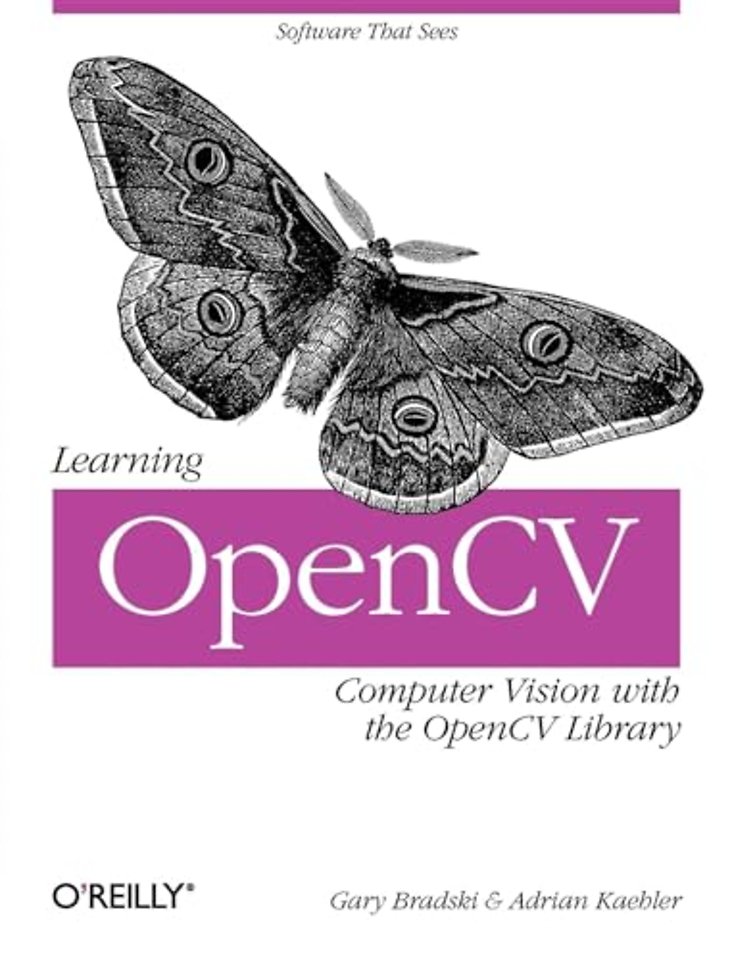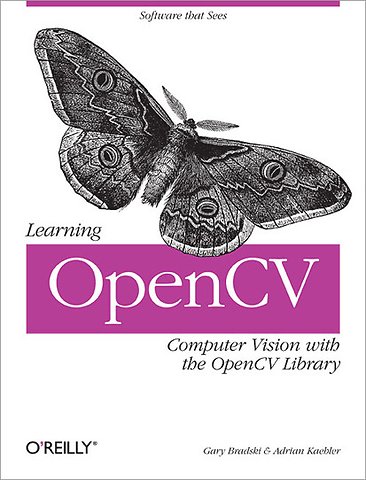Learning OpenCV
Paperback Engels 2008 9780596516130Samenvatting
"This library is useful for practitioners, and is an excellent tool for those entering the field: it is a set of computer vision algorithms that work as advertised."-William T. Freeman, Computer Science and Artificial Intelligence Laboratory, Massachusetts Institute of Technology
Learning OpenCV puts you in the middle of the rapidly expanding field of computer vision. Written by the creators of the free open source OpenCV library, this book introduces you to computer vision and demonstrates how you can quickly build applications that enable computers to "see" and make decisions based on that data.
Computer vision is everywhere-in security systems, manufacturing inspection systems, medical image analysis, Unmanned Aerial Vehicles, and more. It stitches Google maps and Google Earth together, checks the pixels on LCD screens, and makes sure the stitches in your shirt are sewn properly. OpenCV provides an easy-to-use computer vision framework and a comprehensive library with more than 500 functions that can run vision code in real time.
Learning OpenCV will teach any developer or hobbyist to use the framework quickly with the help of hands-on exercises in each chapter. This book includes:A thorough introduction to OpenCVGetting input from camerasTransforming imagesSegmenting images and shape matchingPattern recognition, including face detectionTracking and motion in 2 and 3 dimensions3D reconstruction from stereo visionMachine learning algorithms
Getting machines to see is a challenging but entertaining goal. Whether you want to build simple or sophisticated vision applications, Learning OpenCV is the book you need to get started.
Specificaties
Lezersrecensies
Inhoudsopgave
Purpose;
About the Programs in This Book;
Prerequisites;
How This Book Is Best Used;
Conventions Used in This Book;
Using Code Examples;
Safari® Books Online;
We'd Like to Hear from You;
Acknowledgments;
Chapter 1: Overview;
1.1 What Is OpenCV?;
1.2 Who Uses OpenCV?;
1.3 What Is Computer Vision?;
1.4 The Origin of OpenCV;
1.5 Downloading and Installing OpenCV;
1.6 Getting the Latest OpenCV via CVS;
1.7 More OpenCV Documentation;
1.8 OpenCV Structure and Content;
1.9 Portability;
1.10 Exercises;
Chapter 2: Introduction to OpenCV;
2.1 Getting Started;
2.2 First Program—Display a Picture;
2.3 Second Program—AVI Video;
2.4 Moving Around;
2.5 A Simple Transformation;
2.6 A Not-So-Simple Transformation;
2.7 Input from a Camera;
2.8 Writing to an AVI File;
2.9 Onward;
2.10 Exercises;
Chapter 3: Getting to Know OpenCV;
3.1 OpenCV Primitive Data Types;
3.2 CvMat Matrix Structure;
3.3 IplImage Data Structure;
3.4 Matrix and Image Operators;
3.5 Drawing Things;
3.6 Data Persistence;
3.7 Integrated Performance Primitives;
3.8 Summary;
3.9 Exercises;
Chapter 4: HighGUI;
4.1 A Portable Graphics Toolkit;
4.2 Creating a Window;
4.3 Loading an Image;
4.4 Displaying Images;
4.5 Working with Video;
4.6 ConvertImage;
4.7 Exercises;
Chapter 5: Image Processing;
5.1 Overview;
5.2 Smoothing;
5.3 Image Morphology;
5.4 Flood Fill;
5.5 Resize;
5.6 Image Pyramids;
5.7 Threshold;
5.8 Exercises;
Chapter 6: Image Transforms;
6.1 Overview;
6.2 Convolution;
6.3 Gradients and Sobel Derivatives;
6.4 Laplace;
6.5 Canny;
6.6 Hough Transforms;
6.7 Remap;
6.8 Stretch, Shrink, Warp, and Rotate;
6.9 CartToPolar and PolarToCart;
6.10 LogPolar;
6.11 Discrete Fourier Transform (DFT);
6.12 Discrete Cosine Transform (DCT);
6.13 Integral Images;
6.14 Distance Transform;
6.15 Histogram Equalization;
6.16 Exercises;
Chapter 7: Histograms and Matching;
7.1 Basic Histogram Data Structure;
7.2 Accessing Histograms;
7.3 Basic Manipulations with Histograms;
7.4 Some More Complicated Stuff;
7.5 Exercises;
Chapter 8: Contours;
8.1 Memory Storage;
8.2 Sequences;
8.3 Contour Finding;
8.4 Another Contour Example;
8.5 More to Do with Contours;
8.6 Matching Contours;
8.7 Exercises;
Chapter 9: Image Parts and Segmentation;
9.1 Parts and Segments;
9.2 Background Subtraction;
9.3 Watershed Algorithm;
9.4 Image Repair by Inpainting;
9.5 Mean-Shift Segmentation;
9.6 Delaunay Triangulation, Voronoi Tesselation;
9.7 Exercises;
Chapter 10: Tracking and Motion;
10.1 The Basics of Tracking;
10.2 Corner Finding;
10.3 Subpixel Corners;
10.4 Invariant Features;
10.5 Optical Flow;
10.6 Mean-Shift and Camshift Tracking;
10.7 Motion Templates;
10.8 Estimators;
10.9 The Condensation Algorithm;
10.10 Exercises;
Chapter 11: Camera Models and Calibration;
11.1 Camera Model;
11.2 Calibration;
11.3 Undistortion;
11.4 Putting Calibration All Together;
11.5 Rodrigues Transform;
11.6 Exercises;
Chapter 12: Projection and 3D Vision;
12.1 Projections;
12.2 Affine and Perspective Transformations;
12.3 POSIT: 3D Pose Estimation;
12.4 Stereo Imaging;
12.5 Structure from Motion;
12.6 Fitting Lines in Two and Three Dimensions;
12.7 Exercises;
Chapter 13: Machine Learning;
13.1 What Is Machine Learning;
13.2 Common Routines in the ML Library;
13.3 Mahalanobis Distance;
13.4 K-Means;
13.5 Naïve/Normal Bayes Classifier;
13.6 Binary Decision Trees;
13.7 Boosting;
13.8 Random Trees;
13.9 Face Detection or Haar Classifier;
13.10 Other Machine Learning Algorithms;
13.11 Exercises;
Chapter 14: OpenCV's Future;
14.1 Past and Future;
14.2 Directions;
14.3 OpenCV for Artists;
14.4 Afterword;
Chapter 15: Bibliography;
Colophon;
Rubrieken
- advisering
- algemeen management
- coaching en trainen
- communicatie en media
- economie
- financieel management
- inkoop en logistiek
- internet en social media
- it-management / ict
- juridisch
- leiderschap
- marketing
- mens en maatschappij
- non-profit
- ondernemen
- organisatiekunde
- personal finance
- personeelsmanagement
- persoonlijke effectiviteit
- projectmanagement
- psychologie
- reclame en verkoop
- strategisch management
- verandermanagement
- werk en loopbaan

